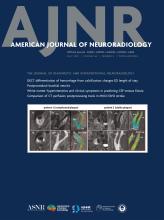This article requires a subscription to view the full text. If you have a subscription you may use the login form below to view the article. Access to this article can also be purchased.
Graphical Abstract
Abstract
BACKGROUND AND PURPOSE: Pretreatment CTA-based Cortical Vein Opacification Score (COVES) has been shown to predict good functional outcomes at 90 days in patients with acute ischemic stroke secondary to large vessel occlusion (AIS-LVO). This is thought to be related to its ability to measure collateral status (CS). However, its association with the reference standard test, the DSA-based American Society of Interventional and Therapeutic Neuroradiology (ASITN) collateral score, has yet to be established. Therefore, this study assesses the relationship between COVES and ASITN CS.
MATERIALS AND METHODS: In this prospectively collected, retrospectively reviewed analysis, patients with anterior circulation LVO from September 1, 2017, to October 1, 2023, were included. The COVES grading, which ranges from 0 to 6, was independently assessed by 2 board-certified neuroradiologists. The ASITN CS was independently assessed by a board-certified neuroradiologist and the performing neurointerventionalist. Any discrepancies were resolved through consensus review. Spearman rank correlation, univariable logistic regression, multivariable logistic regression, and receiver operating characteristic curve analysis were performed. A P value of ≤ .05 was considered significant.
RESULTS: In total, 311 consecutive patients (median, IQR = 68 years [59–78 years]; 55.9% women) met our inclusion criteria. There was significant positive correlation between COVES and ASITN CS (ρ = 0.41, P < .001), and higher COVES was significantly and independently associated with good ASITN CS (unadjusted-OR = 1.74, P < .001) and adjusted-OR = 1.73, P < .001). Receiver operating characteristic curve analysis showed area under the curve of 0.71, P < .001).
CONCLUSIONS: By demonstrating the independent association of COVES with the reference standard test for collateral status assessment, the ASITN CS, we further validate the role of COVES in estimating collateral status.
ABBREVIATIONS:
- AIS
- acute ischemic stroke
- aOR
- adjusted odds ratio
- ASITN
- American Society of Interventional and Therapeutic Neuroradiology
- AUC
- area under the curve
- CS
- collateral status
- COVES
- Cortical Vein Opacification Score
- ECASS
- European-Australasian Acute Stroke Study
- HIR
- hypoperfusion intensity ratio
- IVT
- intravenous thrombolysis
- LVO
- large vessel occlusion
- mCTA
- multiphase CTA
- MT
- mechanical thrombectomy
- OR
- odds ratio
- PH
- parenchymal hematoma
- rCBF
- relative cerebral blood flow
- ROC
- receiver operating characteristic curve
- Tmax
- time to maximum
- uaOR
- unadjusted odds ratio
- VO
- venous outflow
- © 2025 by American Journal of Neuroradiology













